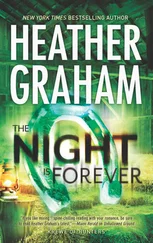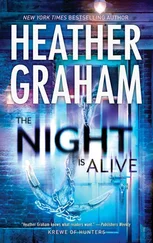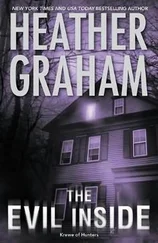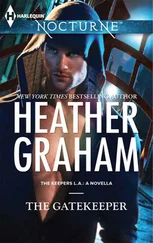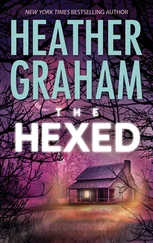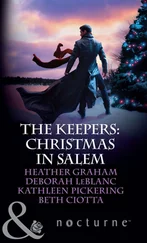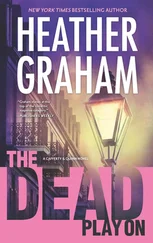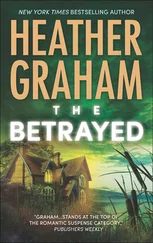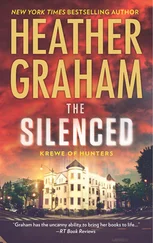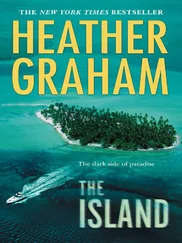Praise for New York Times Bestselling Author Heather Graham
“Graham plays the story’s supernatural angle for both chills and chuckles … Ringo is the best ghost to come along in ages.”
—RT Book Reviews on Nightwalker
“Romantic flourishes enhance this bewitching blend of Native American lore, ghostly shenanigans and modern-day chicanery.”
—Publishers Weekly on Nightwalker
“Mystery, sex, paranormal events. What’s not to love?”
—Kirkus Reviews on The Death Dealer
“Graham peoples her novel with genuine, endearing characters”
—Publishers Weekly on The Séance
“Graham’s latest is an entertaining vampire yarn.”
—Publishers Weekly on Blood Red
“The intense, unexpected conclusion will leave readers well satisfied.”
—Publishers Weekly on The Dead Room
“Even though this ghostly thriller is not a romance … [Graham] introduce[s] delicious romantic interludes. She also brings a fresh perspective to New York’s mysterious underground city.”
—Booklist on The Dead Room
New York Times bestselling author HEATHER GRAHAMhas written more than a hundred novels, many of which have been featured by the Doubleday Book Club and the Literary Guild. An avid scuba diver, ballroom dancer and mother of five, she still enjoys her south Florida home, but loves to travel as well, from locations such as Cairo, Egypt, to her own backyard, the Florida Keys. Reading, however, is the pastime she still loves best, and she is a member of many writing groups. She’s currently vice president of the Horror Writers’ Association, and she’s also an active member of International Thriller Writers. She is very proud to be a Killerette in the Killer Thriller Band, along with many fellow novelists she greatly admires. For more information, check out her website, theoriginalheathergraham.com.
Dear Reader,
First, thank you for reading this! There’s nothing in the world to me like the pleasure of telling a story—unless it’s getting to do so with friends.
Alex Sokoloff is the author of the second book in this series. I met Alex when we were both called to be in the Thriller Killer Band—and it felt immediately as if I had known her all my life. We share a love of adventures, in the water, on land—and in our great cities. Every year I do a Labor Day benefit in New Orleans, and Alex has been there, helping, teaching screenwriting and giving her all.
Deborah LeBlanc is another amazing women. She’s from Louisiana, and has done brilliant things for me and on her own to support reading, our youth—and New Orleans. Deb is president of Horror Writers of America, teaches a boot camp called Pen to Press and has attended many an autopsy!
For the three of us to come together—as we were able to do several times, luckily, in the planning of this series—and work on a project has been sheer joy. And, of course, since we all love New Orleans so much, when we began to think of a world where paranormal beings might just blend in … well, New Orleans popped right into all our heads. Seriously—where else would you hide in plain sight if you were a bit different from others?
My admiration for these two wonderful authors is absolute, and I hope you’ll enjoy our combined venture, that you’ll enjoy The Keepers —our three sisters charged with keeping the balance in the underworld.
Please look for their books in the months to come!
Best,
Heather Graham
THE KEEPERS
HEATHER GRAHAM
 www.millsandboon.co.uk
www.millsandboon.co.uk
To Connie Perry, my extremely dear friend and cohort in many an endeavor. Thank you for all you do—and especially for New Orleans!
Also, for Daena Moller and Larry Montz and the ISPR. Thank you for some great adventures, too!
When the world as we know it was created, it wasn’t quite actually as we know it.
That’s because so much was lost in the mists of time, and the collective memory of the human race often chooses what it will hold and what it will discard.
But once the world held no skyscrapers, rockets did not go to the moon—in fact, the wheel had barely been invented, and families lived together and depended upon one another. The denizens of the world knew better the beauty of waterfalls, of hills and vales, sun and sunset, shadows—and magic.
In a time when the earth was young, giants roamed, gnomes grumbled about in the forests and many a creature—malignant, sadly, as well as benign—was known to exist. Human beings might not have liked these creatures, they might have feared them—for a predator is a predator—but they knew of their existence, and as man has always learned to deal with predators, so he did then. Conversely, there were the creatures he loved, cherished as friends and often turned to when alliances needed to be formed. Humankind learned to exist by guidelines and rules, and thus the world went on, day after day, and man survived. Now, all men were not good, nor were all men bad, and so it was also with the giants, leprechauns, dwarfs, ghosts, pixies, pookas, vampires and other such beings.
Man was above them all, by his nature, and he prospered through centuries and then millennia, and learned to send rockets to the moon—and use rockets of another kind against his fellow man.
When the earth was young, and there were those creatures considered to be of light and goodness, and others who were considered to be, shall we say, more destructive, there was among them a certain form of being who was human and yet not human. Or perhaps human, but with special powers. They were the Keepers, and it was their lot in life not only to enjoy the world as other beings did, but they were also charged with the duty of maintaining balance. When certain creatures got out of hand, the Keepers were to bring them back under control. Some, in various centuries, thought of them as witches or wiccans. But in certain centuries that was not a healthy identity to maintain. Besides, they were not exactly the witches of a Papal Bull or evil in the way the devil in Dante’s Inferno, nor were they the gentle women of pagan times who learned to heal with herbs and a gentle touch.
They were themselves and themselves alone. The Keepers.
As time went by, anything that was not purely logical was no longer accepted, was relegated to superstition, except in distant, fog-shrouded hills or the realm of Celtic imagination, which was filled with Celtic spirits other than those of which we speak. But some of the beliefs of the past were not accepted even there. Man himself is, of course, a predator, but man learned to live by rules and logic, or destroy all the creatures upon which he might prey. Too late for some, for man did hunt certain creatures to extinction, and he sought to drive others to the same fate. But those other creatures learned a survival technique that served them well: hide. Hide in plain sight, if you will, but hide.
As human populations grew, as people learned to read, as electricity reigned, and the telephone and computer put the world in touch, the earth became entrenched in a place where there were things that were accepted and others that were not. Oh, it’s true that the older generations in Ireland knew that the banshees still wailed at night. In Hungary and the Baltic states, men and women knew that the tales of wolfmen in the forests were more than stories for a scary night. And there were other such pockets of belief around the globe. But few men living in the logical and technological world believed in myths and legends, which was good, because man was ever fond of destroying that which he feared.
Читать дальше
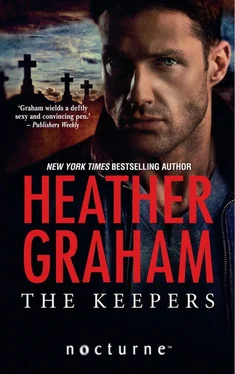
 www.millsandboon.co.uk
www.millsandboon.co.uk